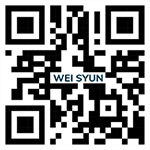Uncover the Differences Between DTY Yarn and FDY Yarn
What is DTY (Drawn Textured Yarn)?
DTY, or Drawn Textured Yarn, is a type of yarn that undergoes a series of stretching, twisting, and texturing processes. These techniques enhance its elasticity and strength, and give it a certain degree of fuzziness. The texturing process imparts superior textile and dyeing properties, making DTY suitable for fabrics that require good draping and elasticity. It is commonly used in weaving and knitting applications, such as making clothes, home furnishings, seat covers, and bags.
What is FDY (Fully Drawn Yarn)?
FDY, also known as Fully Drawn Yarn, Polyester Filament Yarn (PFY), or Spin Draw Yarn (SDY), is a yarn that has been fully drawn during its manufacturing process. This results in high tensile strength and smoothness. FDY is produced at higher speeds compared to POY (Partially Oriented Yarn) and involves stable intermediate drawing integrated into stretching, orientation, and crystallization. FDY is primarily used for direct twisting, multiplies yarns, beaming, and direct knitting, and is ideal for non-textured fabrics such as hospital clothes, pads, surgical sets, and more.
Production Processes of DTY and FDY Yarn
- DTY Production: The manufacturing process of DTY involves simultaneous twisting and drawing using a high-pitched POY texturing machine. This creates continuous filament yarns with permanent distortions, crimps, loops, coils, or crinkles. The process disperses, curls, and entangles the filaments, giving DTY a fluffy appearance and properties akin to both natural and synthetic fibers.
- DTY Production: The manufacturing process of DTY involves simultaneous twisting and drawing using a high-pitched POY texturing machine. This creates continuous filament yarns with permanent distortions, crimps, loops, coils, or crinkles. The process disperses, curls, and entangles the filaments, giving DTY a fluffy appearance and properties akin to both natural and synthetic fibers.
Applications of DTY and FDY Yarn
- DTY Applications: Due to its soft crimp, high bulk, durability, and retention, DTY is suitable for making outer/inner garments, skin-clinging garments, furnishings, and upholstery. It can be molded into various technical properties and heating techniques to suit specific uses. DTY can be produced with different combinations of intermingle points and twisted to high twists like 1500 TPM or 4000 TPM.
- FDY Applications: FDY is widely used in producing high-strength fabrics and textiles for home furnishings, fashion fabrics, denim, terry towels, and more. It is also used in high-end undergarments, sportswear, and non-textured fabrics. FDY threads with high shrinkage are used for fabricating cloth and curtain fabrics, while those with low shrinkage are used in the blanket industry.
Key Differences Between DTY Yarn and FDY Yarn
- Manufacturing Processes: FDY is fully drawn, whereas DTY involves texturing.
- Strength and Stretch: FDY has higher strength due to its fully drawn nature, while DTY offers more stretch and flexibility.
- Texture and Hand Feel: DTY is softer with a crimp texture, providing a soft hand feel, making it suitable for upholstery and skin-clinging garments.
- Applications: FDY is more suitable for applications that require high strength and smoothness, whereas DTY is preferred for items needing elasticity and a softer texture.
As a leading fabric manufacturer, Wei-Syun is an expert who can choose the appropriate type of yarn for their specific textile needs. Feel free to see more about our fabric products, or contact us directly.

















